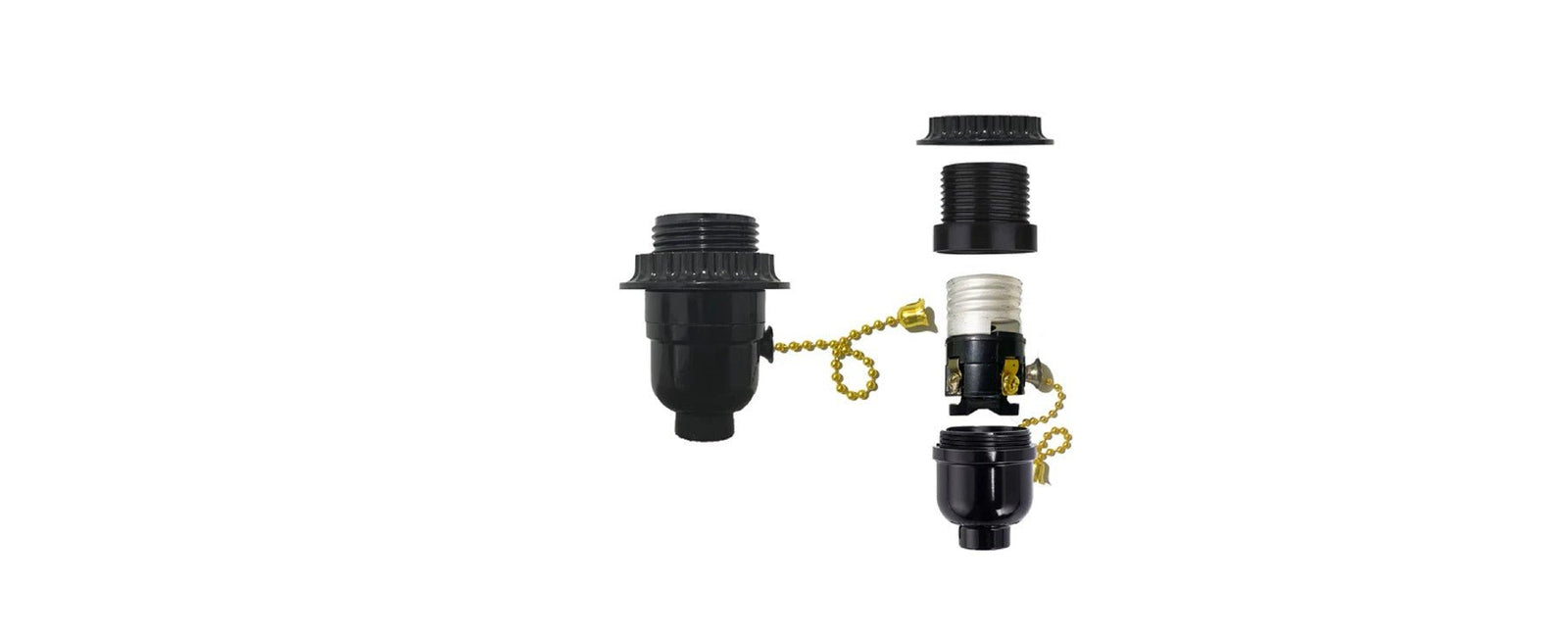Understanding Lamp Sockets: A Deeper Dive
Lamps are an indispensable part of home decor. They provide crucial light, set the mood, and offer a way to express your unique style and taste. But what about the hidden heroes in your lamps – the lamp sockets? These unassuming components play a vital role in how your lamps function, and with a little know-how, you can troubleshoot them and make informed choices when buying or building a lamp.
The Basics of Socket Components
Let's break down the key pieces within a lamp socket:
- Socket Shell: The outer casing of the socket, typically made of metal (brass most commonly) or porcelain. The shell provides the housing for the electrical components.
- Interior: Where the magic happens! The socket interior houses the electrical contacts that connect to the bulb's base. It's usually made of insulating material to prevent electrical shocks.
- Switch (if applicable): Many sockets include a switch to control the flow of electricity to the bulb. Common switch types include push-through, turn knobs, or pull chains.
- Hickey: This small, threaded pipe connects the lamp socket to the main lamp body.
Types of Socket Interiors
Two main types of socket interiors determine what bulbs your lamp can accommodate:
- Screw-in Interiors: These are the most common. They have a threaded interior that matches the threaded base of standard, incandescent, and many LED light bulbs (think of the common 'Edison' type bulbs).
- Pin-Type Interiors: This type is less common and is often found in candelabra or halogen lamps. They have small pins that align with corresponding holes in the bulb's base.
Factors to Consider When Choosing a Lamp Socket
- Bulb Base Size: The most crucial factor! You must choose a socket whose interior matches the base of the bulb you want to use. Standard lightbulbs are usually medium-base (E26), while smaller bulbs often use a candelabra base (E12).
- Material: Brass is durable and classic, but porcelain provides better heat resistance, which is useful for high-wattage bulbs. There is also the phenolic socket which is made from phenolic resin. It is known for durability, ease of use, and heat resistance.
- Wattage Rating: Ensure the socket's wattage rating can handle your chosen bulb's wattage output to prevent overheating and potential hazards.
- Style: Sockets come in various finishes like brass, nickel, or bronze to complement your fixture's aesthetics.
Troubleshooting Socket Issues
- Flickering Light: This often means a loose connection between the bulb and the socket's interior contacts. Try gently bending the contacts inward for a tighter fit.
- Bulb Won't Light: This could indicate a faulty socket interior or a problem with the switch. If the bulb works elsewhere, you might need a socket replacement.
In Conclusion
While they may be small, lamp sockets are essential parts of any lamp! Understanding the components, types, and troubleshooting tips puts you in the driver's seat when choosing or maintaining the perfect lighting for your home.

